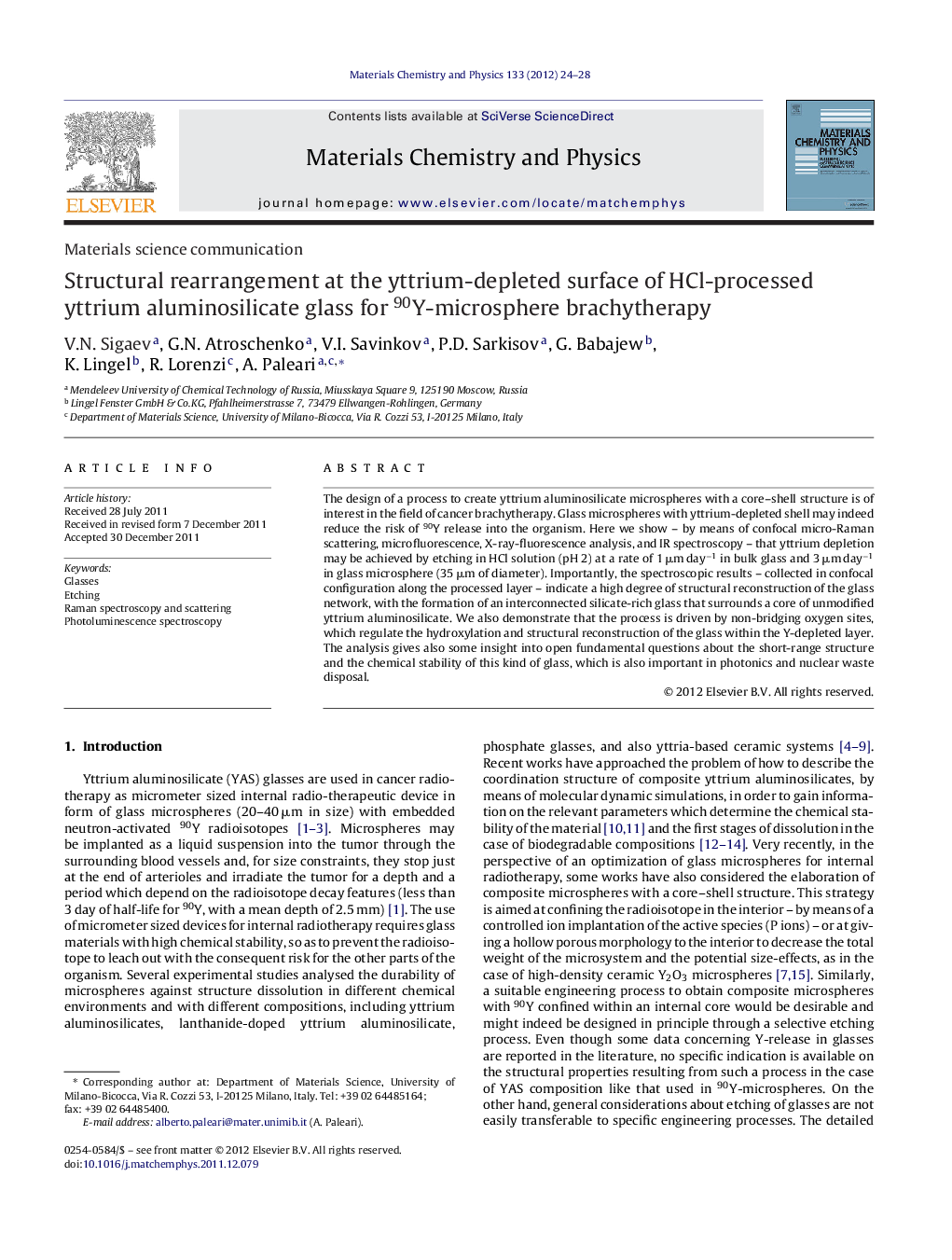| Article ID | Journal | Published Year | Pages | File Type |
|---|---|---|---|---|
| 1524170 | Materials Chemistry and Physics | 2012 | 5 Pages |
The design of a process to create yttrium aluminosilicate microspheres with a core–shell structure is of interest in the field of cancer brachytherapy. Glass microspheres with yttrium-depleted shell may indeed reduce the risk of 90Y release into the organism. Here we show – by means of confocal micro-Raman scattering, microfluorescence, X-ray-fluorescence analysis, and IR spectroscopy – that yttrium depletion may be achieved by etching in HCl solution (pH 2) at a rate of 1 μm day−1 in bulk glass and 3 μm day−1 in glass microsphere (35 μm of diameter). Importantly, the spectroscopic results – collected in confocal configuration along the processed layer – indicate a high degree of structural reconstruction of the glass network, with the formation of an interconnected silicate-rich glass that surrounds a core of unmodified yttrium aluminosilicate. We also demonstrate that the process is driven by non-bridging oxygen sites, which regulate the hydroxylation and structural reconstruction of the glass within the Y-depleted layer. The analysis gives also some insight into open fundamental questions about the short-range structure and the chemical stability of this kind of glass, which is also important in photonics and nuclear waste disposal.
► Y-leaching effects in yttrium alumino-silicates are analyzed at the micrometer scale. ► A high degree of structural reconstruction is driven by non-bridging oxygens. ► Core–shell engineered glass microspheres are obtained after Y-leaching in HCl.
